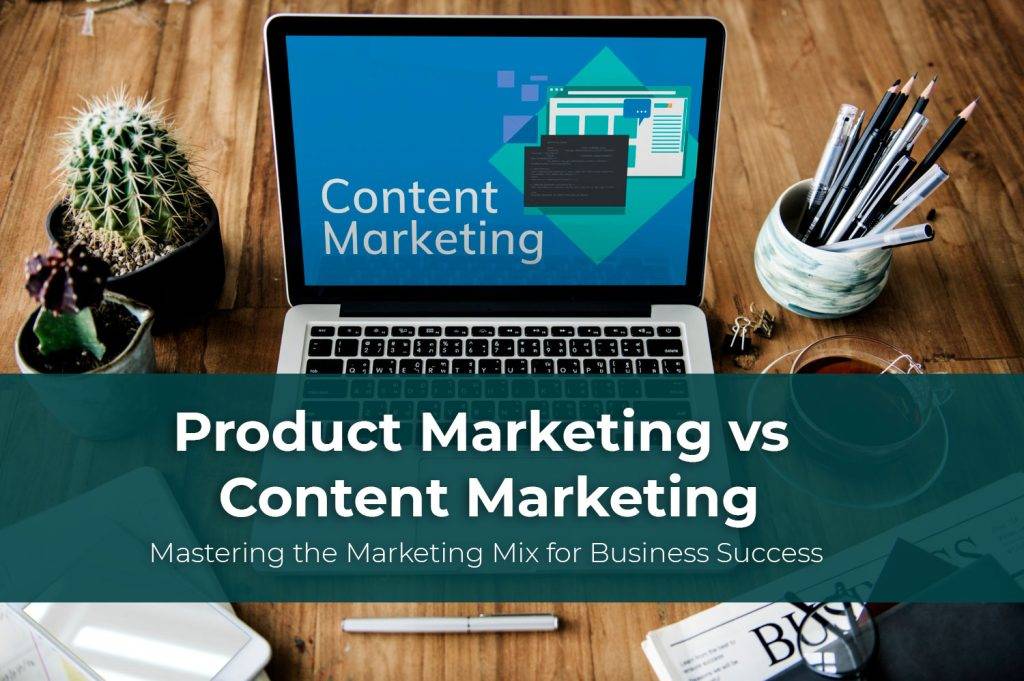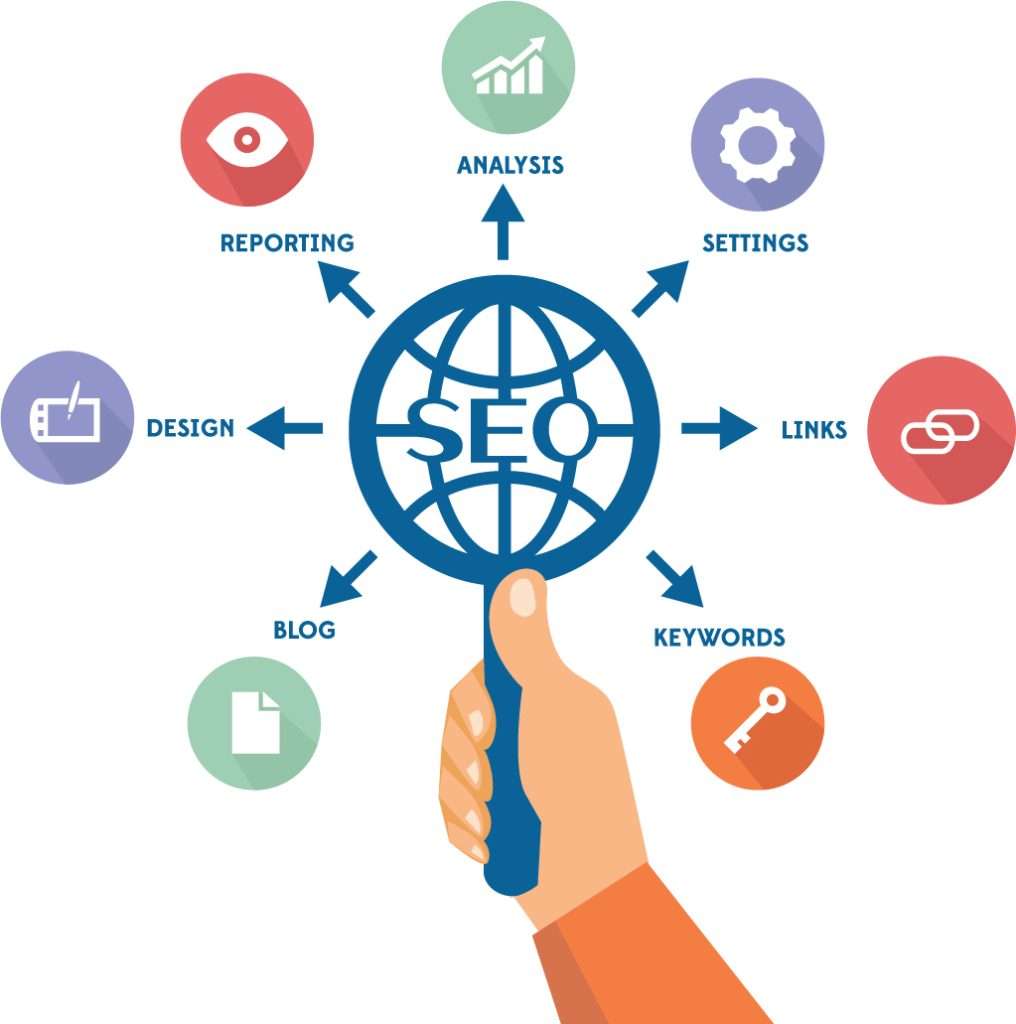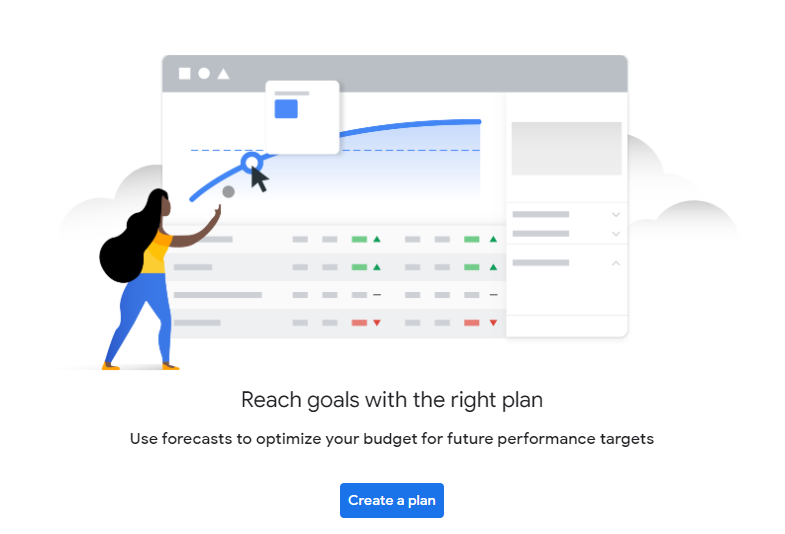The metaverse is the next logical step in the technological advancements of the talent acquisition industry.
Continue readingAn In-Depth Look at the RPO Industry
To further gain an understanding of the direction in which the RPO Industry is headed, let’s take a look at how the system worked in the past, the latest trends.
Continue readingWhy Talent Acquisition Needs People
While talent acquisition might be a process marching towards automation, having people to involved in the process makes all the difference. You need the human element when it comes to the business of hiring other people.
Continue readingHow to Reorient Your Talent Acquisition Teams for Success
To win the race in today’s talent market, talent acquisition teams need to move away from reactive strategies and move to proactive ones. This will help companies win over top talent in the long-run.
Continue readingHow the HR and RPO Service Provider Can Build a Strong Working Relationship
How the HR and RPO Service Provider Can Build a Strong Working Relationship

“If everyone is moving forward together, then success takes care of itself.” – Henry Ford, American Industrialist
As a company entering into a partnership with an RPO service provider for the first time, your HR team and RPO partner must have a solid working relationship from the get-go. Handing a large part or the entirety of your recruitment operations to an outsourced entity can be a daunting move. Companies might choose to undertake RPO services for several reasons. However, no matter the reasoning, the result is often the same, i.e., change. This can be difficult at times. You might be afraid that you may lose control.
Having said that, being cautious of change is nothing out of the ordinary; it’s human nature. The foundation of this relationship will determine how well the partnership functions and to what degree it flourishes. To help you overcome some of the more common obstacles, here are our top five tips for building a strong working relationship between your HR team and the RPO service provider.
1) Communication between the HR and RPO Lays the Foundation
Communication is the cornerstone of any RPO partnership, even before you sign the contract. The first thing you want to do is gauge if you are indeed working with the right RPO service provider. Hence, it is always a good idea to start things off with a list of concerns that you would like addressed. The ability of the Recruitment Process Outsourcing firm to address this will tell you all you need to know.
This precedent also applies to the relationship between the RPO service provider and the internal HR team. Put some thought into how you want present and future communications to happen between the two. While email and phone calls are standard, in-person meetings are also necessary regularly. It plays an important role in the reconnection efforts and reminds all parties of the people on the other side of that email. Establishing the initial mandate for communication sets the tone, ensuring that the RPO partner is available at a moment’s notice. This is crucial in urgent situations.
Getting both the HR and the RPO partner on the same page can be a tricky process, but manageable with a little planning.

2) Commit to the RPO Way
One reason that companies take up RPO services is due to their expert ability to navigate the recruitment space. They are hired for their skills and processes. So, once you have partnered with an outsourcing agency, make sure that all your teams, including your HR, commit to the same. It is important to maintain consistency, especially when it is a new process. This will help prevent the introduction of confusion during the recruitment process.
It not only ensures that everyone is on the same page but also makes sure that your company is following the most streamlined approach possible. In the long run, this is exactly what you want to happen. While it may be hard to resist falling back on the old ways, try to keep the HR team from doing that to ensure the harmony of processes.
“Coming together is a beginning. Keeping together is progress. Working together is success.“ – Henry Ford, American Industrialist
3) Governance Is Needed Between HR and RPO
Now to continue somewhat along the same lines as the previous point, we need to address the issues that can arise with sudden change. The problem with initiating change is it can compartmentalize internal teams and cause them to work in silos. A good workaround for all this is having in place a detailed governance model, which can help introduce said change in manageable degrees.
A basic governance model will help determine the appropriate level of communication, what is discussed, meetings, and responsibilities. Such a document can also help establish a solid degree of accountability and keep both the HR and RPO partner on the same page. Think of it as a reference or guide that walks your business through the step-by-step changes that are to come.

Make sure that no matter what you aim for, that it is achievable.
4) Set Realistic Goals and Expectations
Few things are as disruptive to a business partnership as clashing expectations. To get your RPO service provider and HR team on the same page, set goals and benchmarks for both sides. However, when you are setting these KPIs, deliverables and metrics of measure, make sure that they are realistic.
After you launch the partnership and get into the swing of things, you can use feedback from candidates and clients, as well as reports from the HR and other internal teams to see how effectively these goals are being met. It will also show you where you need to make corrections to keep parameters realistic.
5) See Your RPO Provider as a True Partner
Once all the communication, documents and metrics are in place, it is time to launch the partnership. Keep in mind that things will only work out so long as you view your RPO service provider as a true business partner, instead of just another vendor. They are an extension of your HR team. Instilling this mindset from the beginning can help shape the foundation for the relationship between the RPO service provider and the HR personnel. Having said that, you need to understand that building such a relationship takes time, regardless of how long or in-depth you planned.
Recent Posts
marketing security
digital marketing strategy for restaurants
benefits of website redesign
cro video strategy
The Power of a Growth Marketer
contractor web designers
digital lead investing
Product Marketing vs Content Marketing
CRO For Mobile Search
What Content Could be Used for a Structured Snippet Extension
Why Do Search Ad Extensions Matter
How Much Does Instagram Pay for 1 Million Views
Home Services Marketing
AMP Tracking Success Your SEO
How to Create Nurturing Content for Facebook
10 Common Meta Tag Mistakes That Are Hurting Your SEO Ranking
How to Write a Great Thank You Email After Your Interview
How to find candidates with YouTube
How Can Performance Planner Serve Your Business in 2023
How Social Media Sourcing is a Core Element in Today’s Strategy
Keep an Eye on Your Facebook Budget When Targetting Your Next Candidate
How Does Supporting Diversity Give Businesses a Headstart
How to Produce Social Media Content for the Gen Z Crowd
6 Reasons You Should be Job Hunting in This Market
5 Tips for Getting Hired in a Management Role
Under-The-Radar Social Media Tools for Sourcing
10 Questions You Should be Asking Your Potential Hires
How to Write a Great Thank You Email After Your Interview?
The Importance of Page Speed in 2022: The Perfect Solution for You
Top 8 Landing Page Hacks to Double Your Sales
The RPO Marketplace: Insights for Growth and Branding in 2022
The RPO Marketplace: Insights for Branding and Growth in 2022

“The most reliable way to predict your future is to create it.” – Abraham Lincoln, 16th President of the United States
An Overview of the RPO Marketplace
When the RPO marketplace was still in its infancy many companies pursued it as a means of reducing cost. What started out as an unstable, disorganized market rapidly grew into a go-to solution for corporate leaders. This was especially the case amidst the global economic crises of the early 2000s.
Following the dot-com boom, the budget for recruitment tightened and RPO agencies really began taking shape. Companies sought strategic and scalable partnerships with RPO agencies in hope of overcoming costly in-house recruitment solutions. By the time of the 2008 economic recession, RPO providers played a highly centralized role in the market and the adoption of their services gained plenty of popularity.
The Present State of the RPO Marketplace
With more and more companies moving towards the digital space post the pandemic and the availability of better technology, the RPO industry is primed for exponential growth. According to a market research report by Technavio, it was reported that the RPO marketplace would see an incremental growth of USD 3.2 billion from 2017 to 2022. In other words, the global market was expected to grow at an accelerated CAGR of 14% between 2018 and 2022. Interestingly enough, 41% of the overall growth is expected to be a contribution from the APAC (Asia-Pacific) region.
Keep in mind that when the market was still young, the relationship between clients and RPO partners was on thin ice at best. However, nowadays, due to better processes, advanced technology and more methodical approaches, clients are looking for more long-term partnerships within the RPO marketplace.
This bodes well for the growth of the industry and the businesses within. Having said that, let’s go over some trends in the RPO marketplace that you should probably watch out for in 2022 and the years to come.
Data and technology play a big role in the success that the RPO industry has seen in recent years.

1. Data Analytics and Artificial Intelligence (AI)
The use of data analytics and artificial intelligence is one of the rapidly rising trends in the global RPO market. These agencies analyze large quantities of data to fast-track the application procedure and help companies make more fluid recruitment decisions.
Things like analytical tools, people analytics, as well as recruitment analytics, play a crucial role in helping recruiters translate raw data into usable information. This information is used to recruit the best candidates. This is one such capability that is boosting the growth of the RPO marketplace.
2. Cost Reduction and Its Contribution to Growth of the RPO Marketplace
It’s just logical reasoning as to why companies seek out RPO firms and their services. They seek more cost-effective solutions that still retain a certain level of quality. Imbalances in the market can have a huge impact on the company’s financials. RPO agencies can help mitigate this by streamlining the hiring process and reducing these imbalances. This ability to effectively address these imbalances makes an RPO solution a desirable one.
“The future depends on what we do in the present.“ – Mahatma Gandhi, Freedom Fighter
3. The Growth of the APAC Region
As mentioned earlier, the APAC or Asia-Pacific region was touted to be one of the biggest contributors to the overall growth of the RPO industry in the years to come. We mentioned how it contributes a massive 41% to that.
It should also be noted that another report by Technavio stated that the RPO industry in this region is expected to reach a valuation of USD 1.08 billion between 2021 and 2025. This is an exceptional growth at a CAGR of around 14%. Fair to say, the RPO marketplace in the APAC region has a more than positive outlook in 2022.
4. The Fragmented Nature of the RPO Marketplace
The RPO market is a very fragmented one. This also makes it a highly competitive industry, be it global, national or regional. The presence of so many players in the market shows us that there is a high level of demand in the market that needs to be met, as evidenced by the growth projections. However, as good a sign as this is, you should keep a close eye on it and evaluate how to best overcome the growing rates of competition down the line.
5. Merit-based Recruitment Will Take a Front Seat in the Hiring Process
Now we come to the last item on the list of things contributing to the growth and demand of the RPO industry. When we consider RPO agency solutions, there is a clear diversion from traditional hiring processes. Instead of relying on heavily resume-based recruitment, the process focuses on the applicant’s skills, practical assessments and performance.
This eliminates a lot of bias and gives you a more fair assessment. This in turn gives you better outcomes in terms of candidate selection. Since this process is so unique to the RPO marketplace, it would explain why it is a contributing factor to the growth of the industry.

RPO agencies need to strike a balance of satisfying both clients and candidates in order to boost their brand.
How Is RPO Branding Strengthened?
Now, let’s have a look at some strengths that service providers can bank on going forward to boost their RPO brand. As the name suggests, the biggest weapon that the RPO service provider has is, well, their ability to recruit. Given the orientation of the industry demands, and the processes within RPO agencies, recruiters can focus on polishing their skills more and develop more organized approaches. This builds that RPO brand for the company. Quality, not quantity as they say.
Another thing that you have to consider is that this is partly due to the investment in the right recruitment tools and technology. It’s a self-feeding cycle. RPO agencies can invest in specific recruitment technology, training and tools as it will be an investment in their core competency as a service provider.
Keep in mind that even with all the most cutting-edge tech in the field, RPO agencies still need to produce results. This is what shows clients they are worth partnering with. This brings in a strong factor of accountability that clients can rely on. Another reason with which branding is built in the realm of outsourced recruitment is candidate experience. RPO agencies prioritize the candidate’s experience, ensuring that they have a good recruitment process experience. This ultimately reflects well on the client’s employer brand, which in turn boosts the RPO agency’s brand.
Recent Posts
marketing security
digital marketing strategy for restaurants
benefits of website redesign
cro video strategy
The Power of a Growth Marketer
contractor web designers
digital lead investing
Product Marketing vs Content Marketing
CRO For Mobile Search
What Content Could be Used for a Structured Snippet Extension
Why Do Search Ad Extensions Matter
How Much Does Instagram Pay for 1 Million Views
Home Services Marketing
AMP Tracking Success Your SEO
How to Create Nurturing Content for Facebook
10 Common Meta Tag Mistakes That Are Hurting Your SEO Ranking
How to Write a Great Thank You Email After Your Interview
How to find candidates with YouTube
How Can Performance Planner Serve Your Business in 2023
How Social Media Sourcing is a Core Element in Today’s Strategy
Keep an Eye on Your Facebook Budget When Targetting Your Next Candidate
How Does Supporting Diversity Give Businesses a Headstart
How to Produce Social Media Content for the Gen Z Crowd
6 Reasons You Should be Job Hunting in This Market
5 Tips for Getting Hired in a Management Role
Under-The-Radar Social Media Tools for Sourcing
10 Questions You Should be Asking Your Potential Hires
How to Write a Great Thank You Email After Your Interview?
The Importance of Page Speed in 2022: The Perfect Solution for You
Top 8 Landing Page Hacks to Double Your Sales
Why Is There a Talent Shortage and What Can You Do?
Why Is There a Talent Shortage and What Can You Do?

“Repetition is the mother of skill.” – Tony Robbins, American Author
The talent shortage is a new reality and it is here to stay for a long time. When we say this, we don’t mean just in Canada, but also across the world. The talent shortage is a complex issue and has just as heavy consequences for employers. According to a study – 2021 Q3, ManpowerGroup Talent Shortage and Employment Outlook Survey – 69% of global companies reported skill shortages in the year 2021.
That is a massive hike from the 35% that was estimated in 2013. The future doesn’t indicate that this trend is going to change any time soon. Many surveys and studies, such as the research reports produced by the Everest Group and news reports by Korn Ferry, show that the issue is here to stay.
However, you need not worry! There are a variety of solutions that will allow you to conquer the problem. This blog will not only cover the reasons behind the global talent shortage but also solutions that can be adopted by professionals as well as organizations.
We will also have a look at how an RPO agency fits into the picture and can help you bolster your ranks going forward in this context.
Why Is There a Talent Shortage?
There are a myriad of factors that play into the talent shortage issue. One of the main ones that consistently finds itself at the root of the problem is workforce demographics. We need to understand that employment and market conditions vary greatly from country to country. Changing demographics, work policies, company policies, education rates, wage rates, supply and demand, are all factors that ultimately add up to shape unique scenarios.
Having said that, there is an overall decline in the workforce population. This is one of the root causes for the talent shortage in 2022 and previously. It has been a steadily shifting phenomenon where the overall working population has seen a decrease. Here are a few reasons why this might be happening:
1. The Old Guard is Aging Out
According to a report by the Health Innovation Forum, persons born between 1946 and 1965 make up an estimated one-third of the Canadian population. This translates to roughly 10 million Canadians. By 2031, these baby boomers will reach an average age of 65 to 85-years-old. This puts a large chunk of the working population at the tail-end of their retirement, through to the next decade. This issue has only been worsened by events such as the pandemic where many were pushed into early retirement or loss of work. This left a huge gap in the labour market.
The pandemic played a significant role in the formation of these issues.

2. The Youth Are Not Prepared to Work in This Market
According to a Deloitte report, Millennials make up around 37% of the working population in Canada. However, many still lack the necessary skills to fill the vacant positions or are just starting. The shortage of time, high expectations and steep learning curves makes for a challenging road ahead.
3. Covid-19 and Immigration
The immigration debate concerning the labour market is nothing new. Now immigration may not have a direct effect on the labour market as per some claims. However, others see it as a major factor for economic growth, this is especially true if you consider temp jobs in Canada. Having said that, with the arrival of Covid-19, the Canadian government brought in many changes to their immigration policies – like most countries around the world.
“Making good decisions is a crucial skill at every level.“ – Peter Drucker, Austrian-American Educator
4. Changing Expectations
In terms of expectations, they come from both sides. From the industry’s side, there is an expectation to have a higher, more niche skill set to match growing technologies and needs. On the employees’ side, there is an expectation for better work hours, flexible working conditions, higher wages and so on. Hence, there is an inherent conflict.

You need soft skills and technical skills to overcome the market gap.
What Can Professionals Do?
Whether you are a professional or a newcomer entering the talent market, you need both technical skills and soft skills to better your chances. According to ManpowerGroup, the most in-demand technical skills for the past year 2021 were operations and logistics as well as manufacturing and production. Certain administrative and customer-centric roles also exist.
In terms of soft skills, you need to be resilient, adaptable to high-stress environments, and be able to think critically. Cultivating such skills will help you gain and maintain jobs in high-competition environments that the industry is faced with. You also need to make sure that you are up to date with the latest industry expectations and try to meet them to the best of your ability.
“Strive for continuous improvement, instead of perfection.“ – Kim Collins, Track and Field Athlete
How Can Organizations Combat the Talent Shortage?
Honestly, evolution is your only surefire strategy going forward. Organizations that want to succeed and close in on that talent gap need to change with the times and meet the expectations of the workforce. Younger generations not only expect more from employers but are also willing to take their valuable skills to the competition if the benefits are better.
So, take a moment to consider what you can give them. Things like higher wages, flexible work culture, dynamic learning opportunities and room to grow within the company are all great facets to consider. You should also look into reskilling and upskilling your employees. Investing in the reskilling of current employees is cost-effective in the long-run, while also directly addressing the talent shortage.
The fight to overcome the talent gap can be taken a step further if you re-imagine how you measure productivity. Quality is the name of the game. You might also want to consider switching up the recruiting and hiring strategies of the organization. Hire for transferable skills, work with data-driven recruitment process outsourcing (RPO) agencies or even an employee referral program for the best results.
How Can an RPO Agency Help You During a Talent Shortage?
One of the reasons companies prefer to work with RPO agencies is their ability to support large-scale restructuring and recruitment. It’s something that some companies may lack the ability to execute internally. One such period in time that demonstrates and highlights RPO services is the economic recession of 2008, where many companies turned to RPO agencies.
RPO agencies can help organizations source, recruit, manage accounts, generate leads and everything in between to give you the best possible recruitment initiative possible. Having said that, it is a path well worth considering in this current market.
Recent Posts
marketing security
digital marketing strategy for restaurants
benefits of website redesign
cro video strategy
The Power of a Growth Marketer
contractor web designers
digital lead investing
Product Marketing vs Content Marketing
CRO For Mobile Search
What Content Could be Used for a Structured Snippet Extension
Why Do Search Ad Extensions Matter
How Much Does Instagram Pay for 1 Million Views
Home Services Marketing
AMP Tracking Success Your SEO
How to Create Nurturing Content for Facebook
10 Common Meta Tag Mistakes That Are Hurting Your SEO Ranking
How to Write a Great Thank You Email After Your Interview
How to find candidates with YouTube
How Can Performance Planner Serve Your Business in 2023
How Social Media Sourcing is a Core Element in Today’s Strategy
Keep an Eye on Your Facebook Budget When Targetting Your Next Candidate
How Does Supporting Diversity Give Businesses a Headstart
How to Produce Social Media Content for the Gen Z Crowd
6 Reasons You Should be Job Hunting in This Market
5 Tips for Getting Hired in a Management Role
Under-The-Radar Social Media Tools for Sourcing
10 Questions You Should be Asking Your Potential Hires
How to Write a Great Thank You Email After Your Interview?
The Importance of Page Speed in 2022: The Perfect Solution for You
Top 8 Landing Page Hacks to Double Your Sales
RPO Industry: Top 9 Facts You Need To Know
RPO Industry: Top 9 Facts You Need To Know

“Information is not knowledge. The only source of knowledge is experience. You need experience to gain wisdom.” – Albert Einstein, Theoretical Physicist
Looking for expert support with a Recruitment Process Outsourcing (RPO) provider brings many benefits to a growing business. Businesses can outsource the task and responsibility of recruitment through an RPO solution. The RPO industry helps alleviate the burden of searching for high-quality candidates for a complex workforce. Here are 9 facts you need to know about the Recruitment Process Outsourcing industry:
1. Brand Representation Is a Top Priority in the RPO Industry
Your employment brand will be placed up front. While recruiting it is essential to make sure that your employment brand is presented well to all candidates that come your way. An RPO will make sure to understand the organization’s values so that they can convey a clear picture of your value proposition during the recruitment process.
2. You Get a Wide Range of Services
There are two categories that an RPO is classified into: Enterprise RPO and Segmented RPO. Enterprise RPO is a complete service solution where the RPO partner takes on all recruitment responsibilities for the organization. Segmented RPO splits the recruitment process between the company and the RPO partner.
3. Top Talent is Always a Priority
Organizations sometimes lack the expertise to recruit the best candidates for an open position, that’s where the RPO industry comes into play. Recruiters need to understand that the competition for top talent is fierce and an RPO service can help set you apart by getting the perfect candidate for the required role.
Critical analysis is a tool used by RPO providers to help companies decide the best course of action.

4. The RPO Industry Stays on Top of the Talent Market
RPOs keep track of the talent market scenarios and industry trends because the hiring process goes beyond exploring local geographies. An average Human Resources (HR) professional will find it difficult to match a candidate to the opportunity due to their lack of understanding of these trends. An RPO can fill the gaps that often get overlooked by the HR department.
5. Flexibility Is a Core Principle
The RPO industry provides flexibility that can relieve a business and allow you to focus on growth, assuring you the talent needed for success. Quick growth is a goal for many but it can become an issue when there is a demand for talent.
“Flexibility is the key to stability.” – John Wooden, American Basketball Coach
6. RPO Providers Help with Cost Reduction
One of the top reasons a business may look to top RPO companies to resolve their recruitment problems is because it reduces the cost of recruitment. Many companies spend a huge portion of their budget on hiring when they need to expand and grow. An RPO provider can reduce this cost by streamlining your recruitment process. They do this by showing you better ways to recruit the best talent with lesser money spent on the process.
7. RPO Industry and Critical Analysis Go Hand-in-Hand
In the area of critical analysis, an RPO provider can help a company decide the best course of action. An example of such a service is how to choose between permanent and temporary staff and estimate how long it will take to fill the position.

RPO industries are in a unique position to give businesses unique insights into the talent market.
8. Businesses Get Improved Recruitment Process Quality
Top recruitment outsourcing companies know that a great recruit is much more than a combination of experience and education. Personality, previous accomplishments, and many other factors play an important role in finding a suitable candidate for the open position. Hiring managers often miss out on covering these qualities due to a high volume of candidates to go through and time constraints. An RPO provider can look into these qualities while still looking for candidates.
9. Bonus Benefits of RPO Services
When companies employ RPO services they can access real-time recruiting dashboards, have an insight into the talent market, and pinpoint issues with supply and demand of the market. In this way, an RPO provider helps organizations with much more than just reducing the cost of finding suitable candidates.
Recent Posts
marketing security
digital marketing strategy for restaurants
benefits of website redesign
cro video strategy
The Power of a Growth Marketer
contractor web designers
digital lead investing
Product Marketing vs Content Marketing
CRO For Mobile Search
What Content Could be Used for a Structured Snippet Extension
Why Do Search Ad Extensions Matter
How Much Does Instagram Pay for 1 Million Views
Home Services Marketing
AMP Tracking Success Your SEO
How to Create Nurturing Content for Facebook
10 Common Meta Tag Mistakes That Are Hurting Your SEO Ranking
How to Write a Great Thank You Email After Your Interview
How to find candidates with YouTube
How Can Performance Planner Serve Your Business in 2023
How Social Media Sourcing is a Core Element in Today’s Strategy
Keep an Eye on Your Facebook Budget When Targetting Your Next Candidate
How Does Supporting Diversity Give Businesses a Headstart
How to Produce Social Media Content for the Gen Z Crowd
6 Reasons You Should be Job Hunting in This Market
5 Tips for Getting Hired in a Management Role
Under-The-Radar Social Media Tools for Sourcing
10 Questions You Should be Asking Your Potential Hires
How to Write a Great Thank You Email After Your Interview?
The Importance of Page Speed in 2022: The Perfect Solution for You
Top 8 Landing Page Hacks to Double Your Sales
RPO Performance: How to Measure and Better Your Business Tactics
RPO Performance: How to Measure and Better Your Business Tactics

“It is much more difficult to measure nonperformance than performance” – Harold S. Geneen, American Businessman
With the growth of every company, there comes a time when you have to stop and reassess before you can make your next move. Part of the growth process, especially for large multinational companies and corporations is Recruitment Process Outsourcing (RPO). These days, RPO has become an integral part of corporate growth given the significant role the services play in hiring, recruitment, onboarding and talent acquisition. Hence, it becomes vital for companies to be able to measure their RPO performance or rather the service offering of their RPO partners.
Like everything else in the business world, there have to be measures and metrics to help guide the next step. Goals and expectations should therefore be set in place before one outsources work to an external third-party agency like an RPO provider. In this blog, we cover ways in which a business or company might be able to measure the RPO performance of their service provider.
The Role of RPO Providers in the Modern Landscape
RPO services can be short-term or long-term in nature, depending on the needs of the business. When you consider long-term RPO services, they are highly involved in the overall talent acquisition and hiring operations. These kinds of galvanized initiatives are highly essential for major business ventures. However, at the same time, you need to be able to measure your return on investment.
It should be noted that RPO service providers have already taken steps to measure their RPO performance. They have large volumes of data that allows them to assess what works and what doesn’t. Based on the extrapolated information, they take action to implement the best strategies for their clients. On the other end of things, when it comes to businesses measuring their RPO partner’s performance, it can vary. Each business has different requirements at the end of the day. Having said that, here are some ideal ways in which you can measure the performance.
Before you can measure your RPO performance, you need to have the right metrics on hand that are relevant to your business.

Establishing the RPO Performance Metrics
Before you go ahead and take on the services of an RPO provider, you might want to check your metrics. These metrics should give you a basis to measure the RPO provider’s performance against. Keep this in mind as a rule of thumb. The metrics should supplement the in-house talent acquisition team and human resources department in the following tasks:
- Creating recruitment strategies
- Handling important technologies
- Consulting candidates and recruiters
- Shortlisting for interviews
- Screening and assessing candidates, as well as, onboarding new joinees
“The goal of measurement is to not only do things right but do the right things and continuously improve doing that“ – Pearl Zhu, Author
Considering What You Have to Gain from an RPO Partnership
RPO services are a great boon for many different types of companies at various stages in the business life cycle. However, what appears to be a great service, may not always be the right move for your business. It all depends on the needs of the organization. Hence, it is always advisable to consider what your company has to gain from the RPO service provider and if that is what you need.
For instance, generally, some of the benefits are considered to be a huge time saver. They are also cost effective and efficient. RPO providers come up with custom strategies and can take care of their client needs from A to Z. They also ensure the recruitment of high-quality candidates in a streamlined manner. RPO agencies are also industry experts when it comes to sourcing and the associated labour laws that one has to keep in mind.
All these things sound fantastic for an overall optimized process, but ask yourself if your business is in a place where you can afford these services. Do you need these services? And of course, do you have the capacity to cater to the results these services would provide? Only once you analyze these can you even consider taking on an RPO partner and of course, measuring the RPO performance.
Measuring the RPO Performance
Now that we have a foundation set, we can have a look at the metrics against which to measure the RPO performance provided to your company. These metrics will tell you not only where the RPO services need to improve, but also the quality of the RPO provider you partner with.
RPO Performance Metric #1: Time Taken to Fill Job Positions
Efficiency is a very important RPO performance indicator. Candidates and companies alike want a quick and efficient process. Candidates want a fast response on their application and companies need to fill positions to prevent delays in operations. It is therefore crucial for the RPO partner to have a proactive Application Tracking System (ATS) at every stage.
Find the cause of delay, if any, and push for faster targets and better deadlines. You can also check how quickly candidates get their responses for applications. Little things here and there add up to show the overall efficiency of the RPO partner.

Workplace synergy and compatibility with company culture is a big indicator for the performance of an RPO partner.
RPO Performance Metric #2: Candidate Source
In recruitment, it is important to know where your candidates come from. This is important so that you know that your recruitment efforts are engaging the right candidates or the right demographic. Check to see if your RPO partner is sourcing the candidates from a source that coincides with what you’re looking for. Depending on where they source candidates, it will determine the quality of the hire.
RPO Performance Metric #3: Quality of Interviews
RPO services are known for their high-quality service offerings. This attracts candidates to accept offers more quickly and is also a good indicator of the RPO’s success rate. Let’s face it, interviews take lots of time and effort. At the same time, companies want candidates who are enthusiastic to work for the vision of the business. If your RPO provider brings you the right candidates, it will make the interview process that much smoother. This will ultimately tell you how well the RPO service strategy is performing.
RPO Performance Metric #4: Offer-to-Acceptance Ratio
The term ‘Offer-to-Acceptance Ratio refers to the percentage of accepted offers from an organization. If there is a high rate of offer rejection, the RPO provider should focus on delivering clear-cut expectations to the short-listed candidates. Another issue this could point to is the quality of screening done for the candidate before offering them the job. Though it’s not an exact science when it comes to predicting what the candidate will do, it is possible to weed out the potential hires.
This ratio tells you how well your RPO handles the screening process and the quality of their final selection of candidates. It also points to their ability to communicate on behalf of the company.
“The measure of success is not whether you have a tough problem to deal with, but whether it is the same problem you had last year.“ – John Foster Dulles, Former United States Secretary of State
RPO Performance Metric #5: Company Culture and Workplace Synergy
RPO partners should align themselves with the company culture, values, brand and other initiatives of the business. They should become an extension of your company. This is the only way to have positive workplace synergy. If there are a lot of issues with the overall performance and communication, there might be some level of misalignment with the company culture and the RPO.
To counteract this, consider discussing the working relationship, the image you want to be conveyed as a client, the impact and motivation you are trying to achieve through your mission and so on. You need to see what works and what doesn’t, and then make corrections accordingly.
RPO Performance Metric #6: Accessibility
Now, we come to the last point regarding RPO performance. RPO partners are very capable and have great strategies in place. However, you have to keep in mind that it is not just the RPO service provider that is responsible for the success of our recruitment process, but so is the company. They can only perform well if they have access to the relevant databases and tools within the company. It is therefore crucial that you get the HR or talent acquisition team and the RPO provider on the same page for a seamless process.
Recent Posts
marketing security
digital marketing strategy for restaurants
benefits of website redesign
cro video strategy
The Power of a Growth Marketer
contractor web designers
digital lead investing
Product Marketing vs Content Marketing
CRO For Mobile Search
What Content Could be Used for a Structured Snippet Extension
Why Do Search Ad Extensions Matter
How Much Does Instagram Pay for 1 Million Views
Home Services Marketing
AMP Tracking Success Your SEO
How to Create Nurturing Content for Facebook
10 Common Meta Tag Mistakes That Are Hurting Your SEO Ranking
How to Write a Great Thank You Email After Your Interview
How to find candidates with YouTube
How Can Performance Planner Serve Your Business in 2023
How Social Media Sourcing is a Core Element in Today’s Strategy
Keep an Eye on Your Facebook Budget When Targetting Your Next Candidate
How Does Supporting Diversity Give Businesses a Headstart
How to Produce Social Media Content for the Gen Z Crowd
6 Reasons You Should be Job Hunting in This Market
5 Tips for Getting Hired in a Management Role
Under-The-Radar Social Media Tools for Sourcing
10 Questions You Should be Asking Your Potential Hires
How to Write a Great Thank You Email After Your Interview?
The Importance of Page Speed in 2022: The Perfect Solution for You
Top 8 Landing Page Hacks to Double Your Sales
5 Paths to Boosting RPO Success in 2022
5 Paths to Boosting RPO Success in 2022

“The key to success is to start before you are ready.” – Marie Forleo, American entrepreneur
Recruitment process outsourcing (RPO) companies that want to succeed in 2022 need to go the extra mile when they provide their services. Not only will they have to deal with competition in their industry but also tackle the issue of talent shortages. All this needs to be handled while keeping the costs down. To attain RPO success going further into this year, firms will need to innovate. They will need to pivot their plans to work with a more hybrid model of sorts. However, issues like rising levels of inflation, the threat of another pandemic, talent scarcity are all obstacles that will have to be overcome as well.
In this blog, we will talk about a few different solutions that RPO agencies can adopt to overcome the aforementioned challenges. It should be noted that these solutions are geared towards attaining RPO success as we go into this year. Keep in mind that the facts and numbers in this article stem from a research report / webinar done by the Everest Group titled, “5 Success-driving Actions GBS Organizations Need in 2022”.
5 Paths to Attaining RPO Success in 2022
We still have a long way to go with this year. Yet, even now several issues have already begun to plague the recruitment industry. One of the major issues is talent scarcity and the struggles with upskilling. Not to mention rising competition levels which further exacerbate the issues at hand. While RPO companies are well-equipped to deal with a wide variety of situations, even they need to think outside the box. Having said that, here are a few different ways to reach RPO success.
Path #1: Pivot to a Hybrid Work Model
The hybrid work model has rapidly gained popularity over the last couple of years. For one, it is convenient, especially considering the whole situation with the ongoing pandemic. On the other hand, companies and organization leaders are still a little hesitant towards it. This is because the model itself is rather new and that leaves room for uncertainty. However, despite hesitations, the research reported that about 70% of the teams that they included in their servers were more likely to work within the hybrid model.
Global inflation has played a significant role in the rise of labour costs and operational expenses.

Path #2: Change Expectations for Cost and Profits
In the last two years, the global inflation levels have drastically changed, with 2022 being no different it would seem. Before the pandemic, the labour costs were on the rise as the overall operational costs were relatively lower. Now, both labour costs and operational expenses are rising. As a result, RPO partners won’t be able to provide their clients with the level of financial benefits that they have come to expect.
Rohitashwa Aggarwal, the Vice President of Global Sourcing at Everest Group, suggested a few key areas to focus on. This is where the upper management can control the costs somewhat. Specifically, he mentioned talent acquisition and retention. While there is a talent shortage in the job market, retention tactics act as a counter-balance to help even things out.
Another way to go about controlling cost and achieving RPO success is by being more selective of the services provided to clients. When an RPO partner gives a client a more traditional outsourcing service, it can help add value beyond the profit margin.
“Success is not final; failure is not fatal: It is the courage to continue that counts.“ – Winston S. Churchill, Former Prime Minister of the United Kingdom
Path #3: Create Value Beyond Profit
Sakshi Garg, the Vice President of Global Sourcing, at Everest Group made an interesting observation in the research. It was noted that organizations that focused on creating value above profit attained a significant level of RPO success in the form of client impact. She recommended that companies should start with the use of centers of excellence (COE).
The purpose of COEs is to bolster the client’s agenda, which can sometimes go beyond the aforementioned traditional recruitment process outsourcing services. COEs can be created by doing a few things. For one, the organization could speed up the client’s digital presence and operations, give them better talent management solutions and even upskill their existing talent.

Changing your overall talent strategy or just a core aspect of it can have amazing ripple effects on the rest of your RPO efforts.
Path #4: Renovate the Talent Strategy
Improving the company’s overall talent strategy would be a huge move, but at the same time, it brings a lot of benefits to the table. The first thing that could be done is that the leadership could look internally to evaluate where their existing talent might fit into different roles.
Another thing that could be done is to ramp up recruitment on college campuses. The key is to realize the massive potential that universities have to offer in terms of their student talent pool. Tap into that by partnering with other companies in your industry, come up with strategies that can work at the university level to leverage efficient recruitment of these recent grads into your ranks.
Path #5: Give Importance to Employee Experience
To achieve RPO success, RPO providers should seriously consider giving importance to their employees’ experience. For one, it was noted in the Everest Group’s research that the COEs that were created around employee experience significantly saw improvement in the clients’ customer experience.
So, when a recruitment process outsourcing agency does the same, it creates a good experience for their employees, which in turn boosts talent strategies. It also improves the experiences of the talent they recruit, the suppliers and even customers. Think of it as a ripple effect with the employee experience at the core of it all.




































